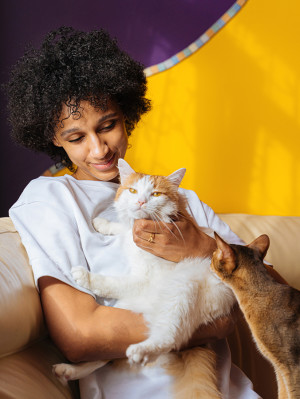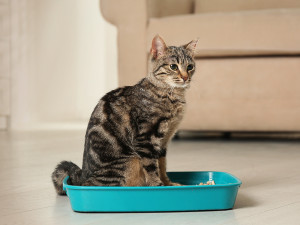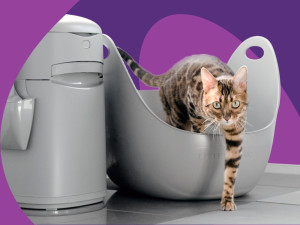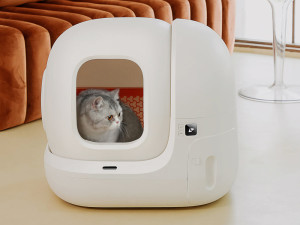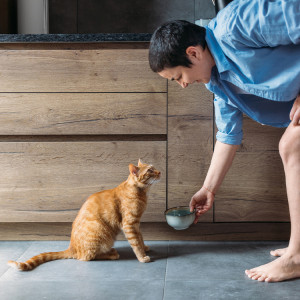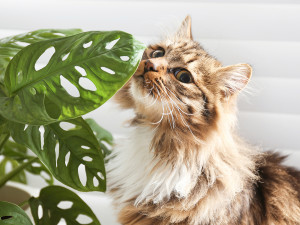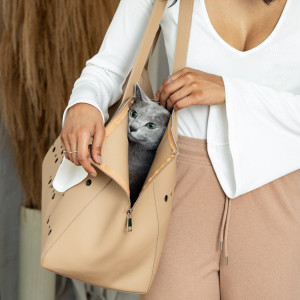Step-by-Step Guide: How to Safely Express Your Cat’s Anal Glands At Home
Ick. It won’t be fun, but here’s how to get the job done
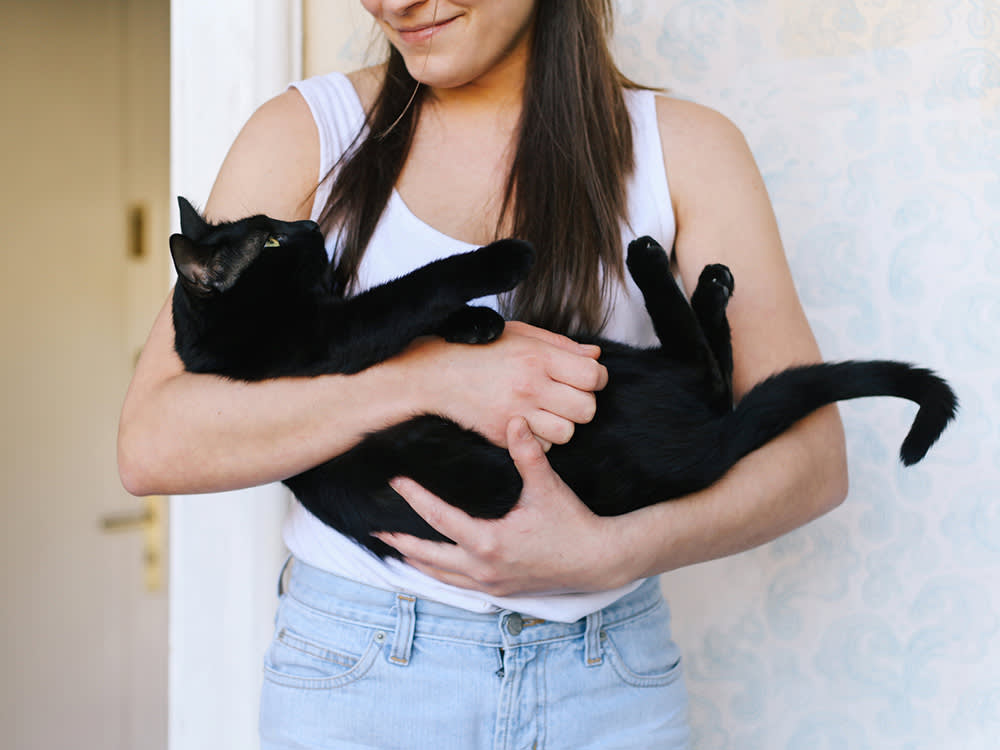
Share Article
The internet says that your cat’s scooting and constant bottom licking may be because of anal gland issues and you’ve decided that this is a problem you want to solve at home. Maybe you’re worried about the stress of taking your cat to the vet or groomer. Maybe you want to personally experience the worst smell ever. Or maybe you just routinely make questionable life decisions. Whatever the reason for wanting to express your cat’s anal glands at home, you and your cat should strap in for a smelly, unpleasant adventure.
What are cat anal glands?
Cat anal glands should technically be called anal sacs. Anal sacs are little, pea-sized sacs filled with disgusting goo that are located between the layers of the anal sphincter. These sacs are lined with anal glands that secrete a highly scented fluid, which then exits through ducts at the four and eight o’clock positions in the anus. Most people just refer to the whole apparatus as ‘anal glands’ even though it greatly upsets anatomy professors.

littleKin™ is Kinship’s home just for puppy and kitten parents. Bop over to check out expert advice, new pet tools, and special deals—all curated for your newest family member.
opens in a new tabCan I express my cat’s anal glands at home?
You can, but it’s not part of the routine care needed to keep your feline friend happy and healthy. Most cat parents should never have to think about their cat’s anal glands. You should only express your cat’s anal glands if your veterinarian advises you to. It’s not super-fun or pleasant, but it is a procedure you can learn to do at home.
It’s a good idea to do this at your vet’s office the first couple of times so they can help guide you through the process. It’s an even better idea to just let your vet or groomer handle it. That way your cat won’t associate you with it, and they can just go to you for comfort cuddles afterwards.
What is the purpose of expressing a cat’s anal glands?
Cats will normally express a small amount of fluid from their anal glands while defecating or when frightened. This leaves behind a distinct scent that helps mark their territory. When the goo inside the anal sacs gets very thick or the duct gets clogged, this material doesn’t come out like normal.
Expressing an impacted or clogged anal sac will help to empty it before infection develops. Fortunately, cats are much better than dogsopens in a new tab when it comes to not having problems with their anal glands.
When should I consider expressing my cat’s anal glands?
Consider expressing your cat’s anal glands when your local human A&E isn’t busy. Cat bites need antibiotics ASAP, and no one wants to spend the rest of their life explaining how they lost a finger to an infection after trying to mess with their cat’s bum. OK, it’s not usually that dramatic, but an upset cat is a possibility. The process isn’t traumatic and should not be painful, but many cats just do not want you messing around back there.
Other considerations for deciding when to express your cat’s anal glands rely on you watching their behaviour. Some signs that your cat’s anal glands might be giving them problems include the following.
Scooting
This is a classic sign that your cat is uncomfortable and trying to relieve pressure from full anal glands. Cats seem to prefer dragging their bottoms across the most expensive rug in the house.
Licking or biting
Cats with anal gland issues may lick or bite their rear end excessively, indicating discomfort.
A foul odour
If your cat’s anal glands are full, they may leak a greasy, foul-smelling liquid. It smells like a rubbish bin full of fish guts on a hot day.
Redness or inflammation
The skin around your cat’s anus may be red or inflamed if their anal glands are infected. Infected or inflamed anal glands are a medical problem and should not be expressed at home.
Painful defecation
Your cat may meow or yowlopens in a new tab while using the litter box or seem to strain before passing a bowel movement. This could mean their anal glands have become swollen and infected, though many other causes are possible and need to be checked out by your vet.
Blood in the faeces
If you see blood in your cat’s faeces, you should go to your vet and let them figure things out. You’re not going to be able to do much at home for this.
How can I express my cat’s anal glands at home?
You’ve made it past the waving red flags, brushed off the dire warnings and underestimated how bad this stuff smells. Now, it’s time to learn how to express your cat’s anal glands.
If your cat seems in pain at any point during this process, stop what you’re doing and let a professional handle it. These steps should help guide you through the procedure, but expressing anal glands can be trickier than it seems. This will cover the external method of anal gland expression.
1. Gather your materials. You will need:
latex or nitrile gloves
moist wipes or a damp paper towel
a treat or two
the same unbridled confidence that leads someone to buy sushi from a corner shop
a sturdy surface for your cat to stand on, such as a bathroom counter
ideally, a second person to hold the cat’s front end
2. Hold your cat still
Always easier said than done.
3. Trim excess hair back, if necessary
This scent lingers, so long-haired cats may need some sanitary clipping to keep things from getting messy.
4. Wipe away any dried debris
Use a moist wipe or a damp paper towel to wipe away any dried debris from around the anus.
5. Hold a paper towel over the anus
The vile liquid you’re after is under pressure and can shoot unexpectedly far. You’ll smell it for days if it lands where you can’t find it. It’s also a good idea to close your mouth and squint your eyes at this point, just in case.
6. Lift the tail and locate the glands
After lifting the tail straight up, it’s easiest to put the tips of your thumb and forefinger on either side of the tail base (over the cat’s pelvis), then move them down until you’re no longer pushing on the tail. You should be over the rectum at this point, so slide those fingers towards the rear until you feel the thicker tissue of the anus. The anal glands are small, round sacs that are located on either side of the anus. They will feel like small, firm peas if they’re full.
7. Push on the glands to express them
Gently pinch inwards with the glands pushed together between your fingers. Apply gentle pressure and push upwards and towards the sphincter until the glands express their contents. You may see or smell a small amount of material expressed. It can be yellow to brown in colour and come out as a liquid or paste.
8. Clean up
Use a moist wipe or a damp paper towel to clean up any mess.
9. Reward your cat
Give your cat a treat or two as a reward for their cooperation. Best of luck finding them for the rest of the day.
How often should I express my cat’s anal glands?
Ideally? Never. The overwhelming majority of cats don’t need you to do this at all and would very much appreciate it if you didn’t try. But some cats with chronic anal gland issues may need their glands expressed as often as every three to four weeks. Other cats will only need it when they’re showing signs of discomfort.
Is it necessary to take my cat to the vet for anal gland expression?
It’s kind of like cutting your hair at home. You can do it, but is it worth the hassle, mess and uncertainty about the results? Going to a professional is way easier. Your vet can also check for other issues that could be affecting the area while you’re there. As an additional bonus, taking your cat to the vet for this means you won’t risk totally ruining your relationship with your cat for the next few days.
Are there any alternatives to manually expressing the anal glands?
Cats have way fewer anal gland problems than dogs, so most cats will empty their glands on their own without issue. Letting nature take its course is the best alternative to manually expressing the anal glands at home, but this doesn’t work for the rare cat that has anal gland problems. Some cats with recurrent issues may even need surgery to remove the anal sacs completely.
Expressing a cat’s anal glands is no fun for anyone involved. Fortunately, most cats never need this done. If it’s necessary, it’s easiest to let your vet’s office or an experienced groomer handle it.
While anal gland expression is something that some cats will tolerate at home, you should never mess with an anal gland that is red, bleeding, swollen or painful. If you’re committed to doing this at home, the most important thing to remember is to keep your mouth shut while doing it. This cannot be stressed enough.
Frequently asked questions
Why would I need to express my cat’s anal glands?
Your vet may recommend expressing your cat’s anal glands due to prior problems with them. This can be done at home, but it is better handled by a vet or groomer.
Can expressing the anal glands be painful for my cat?
Anal gland expression may involve mild discomfort, but it should not be painful. If your cat seems to be in pain, take them to the vet to check for an anal gland infection.
This information is not meant to be a substitute for veterinary care. Always follow the instructions provided by your vet.
References

Dr. Bartley Harrison, DVM
Dr. Bartley Harrison, DVM is a small animal veterinarian based in North Carolina who has practiced emergency medicine since graduating from the Texas A&M College of Veterinary Medicine. His primary interest areas include pain management, cardiology, and the treatment of shock.
He is a member of the Veterinary Emergency and Critical Care Society, American Veterinary Medical Association, and American Medical Writers Association. In addition to his clinical work, he writes pet health articles to help provide accurate information for both new and experienced pet parents. When he’s not working, he enjoys cooking, traveling, reading, and going on adventures with his dog.
Related articles
![Person with short hair putting water bowl on floor for cat]() opens in a new tab
opens in a new tab8 Ways to Get a Cat to Drink Water
Their desert-dwelling roots might resist hydration, but these tricks can help
![grey and white cat with tongue sticking out]() opens in a new tab
opens in a new tabWhy Is Your Cat Vomiting Like They Partied All Night?
Here’s when you should worry if your cat is throwing up
![cat sniffing a plant]() opens in a new tab
opens in a new tab9 Plants Toxic to Cats
These plants might be beautiful, but they’re deadly to feline foragers
![A gray cat in a tan cat carrier]() opens in a new tab
opens in a new tabYour Cat Doesn’t Have to Hate Their Carrier
A behaviourist’s six surefire steps to training a cat to go in a carrier

